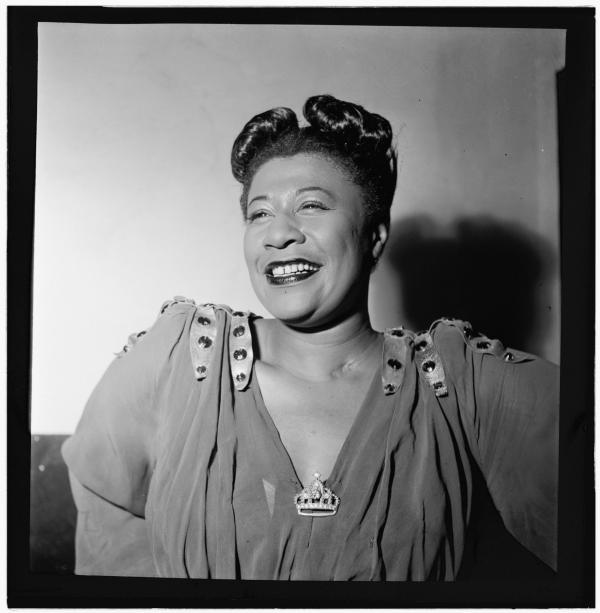Ella Fitzgerald

Bio
It is quite apropos that Ella Fitzgerald was the first vocalist recipient of the NEA Jazz Masters Fellowship, as she is considered by most people to be the quintessential jazz singer. The purity of her range and intonation, along with her peerless sense of pitch, made her a signature singer. In addition, her scat singing, using the technique of a master instrumental improviser, was her hallmark. These characteristics make her an enduring purveyor not only of jazz and the art of improvising, but also of the classic American songbook.
Fitzgerald was raised in Yonkers, New York, and her first artistic proclivities were as a dancer, even though she sang with her school glee club. At 17, she entered the famous amateur show competition at the Apollo Theater, which led to her being hired as a singer for Chick Webb's orchestra. She soon became a popular attraction at the Savoy, and Fitzgerald recorded her first song, "Love and Kisses," with Webb in June 1935. Three years of steady work later, she had her first major hit with her rendition of "A-Tisket, A-Tasket." That lightweight ditty remained a popular request throughout Fitzgerald's ensuing decades.
When Webb died in 1939, Fitzgerald assumed leadership of the band for the next two years, beginning her solo career. In 1946 she began an enduring relationship with producer Norman Granz, becoming part of his Jazz at the Philharmonic concert tours. At the time her regular trio leader was bassist Ray Brown, to whom she was married from 1947 to 1953. By 1955, Granz had become her manager and had begun recording Fitzgerald for his Verve label. This affiliation led to her recording with numerous greats, including Louis Armstrong, Duke Ellington, Count Basie, and Oscar Peterson. Among the landmark recordings she made with Granz were her historic songbook treatments of the music of Ellington, Cole Porter, Jerome Kern, Irving Berlin, Richard Rodgers & Lorenz Hart, Harold Arlen, Johnny Mercer, and Ira and George Gershwin.
Fitzgerald's superb intonation and crystal clear voice was also blessed with a rhythmic flexibility to effortlessly swing. Though she came up in the swing era, Fitzgerald also could hang with the best of the beboppers. Her ability to scat with the most skilled instrumentalists served her well on such notable voice-as-instrument hits as "Lady Be Good," "Flying Home," and "How High The Moon." Each became enduring parts of her repertoire. She forged memorable partnerships with her piano accompanists, most notably Tommy Flanagan and Paul Smith.
In 1987, she received the National Medal of Arts. In her lifetime, she won 13 Grammy Awards and sold more than 40 million albums.
Selected Discography
75th Birthday Celebration, GRP, 1938-55
The Complete Ella Fitzgerald & Louis Armstrong on Verve, Verve, 1956-57
Sings the Duke Ellington Songbook, Verve, 1956-57
The Complete Ella in Berlin, Verve, 1960-61
Montreux '77, Original Jazz Classics, 1977

